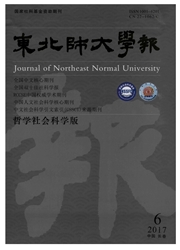

 中文摘要:
中文摘要:
古埃及的贸易可以分为村社、地区贸易两类,可为古埃及的买卖契约、坟墓场景所证实。古埃及贸易主要采取了以物易物的形式,而赊账、让利克服了以物易物的缺陷,这在某种程度上有利于商品交易的顺利开展。国内贸易除了满足人们的生活所需外,还能满足人们追求利润的诉求。国内贸易采用记账单位估价,代表了货币演化道路上的较早的一环。商品的价格具有波动性,市场在价格波动中发挥了作用。国内贸易是古埃及国家主导的再分配经济的补充,两者具有某种程度的互补性。商人虽然依附于各种国家机构,但是在新王国时代呈现独立的态势。
 英文摘要:
英文摘要:
Domestic trade in Ancient Egypt falls into two categories:village level trade,and regional trade,which were attested by texts and tomb scene.The trade appeared as a barter,and the defect of barter was overcome by credit and transfer of some profits which were conductive to smooth the transaction to some extent.Not only domestic trade can satisfy the need of the populace,but also meet the pursuit of profit.The prices were expressed in unit of account,which was an earlier step into evolutionary road of currency.There was a fluctuation in price,which was as a result of market.Domestic trade was as a supplement means to state-oriented redistribution economy,and these two economic types were complementary in some degrees.Generally speaking,merchants always were be affiliated with various state authorities,but showed some independence in New Kingdom.
 同期刊论文项目
同期刊论文项目
 同项目期刊论文
同项目期刊论文
 期刊信息
期刊信息
